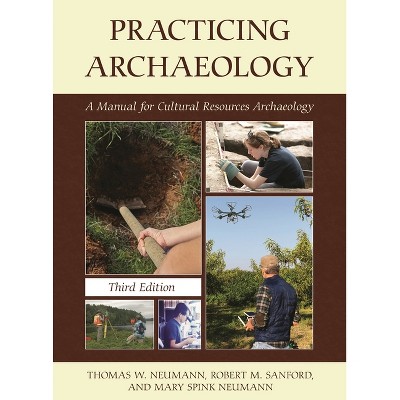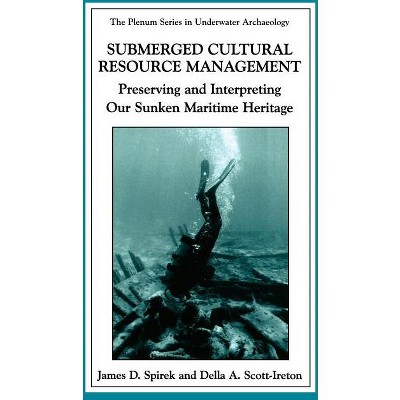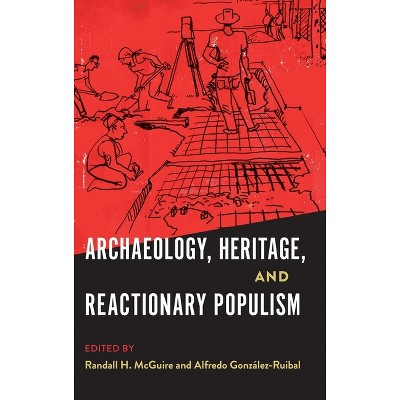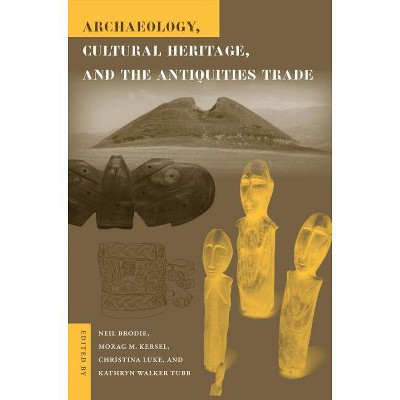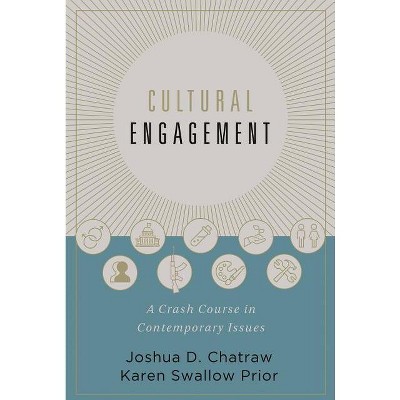Cultural Resources Archaeology - 2nd Edition by Thomas W Neumann & Robert M Sanford & Karen G Harry (Paperback)

About this item
Highlights
- Most students who pursue a career in archaeology will find employment in cultural resource management (CRM), rather than in academia or traditional fieldwork.
- About the Author: Thomas W. Neumann works as an archaeologist for a private firm.
- 274 Pages
- Social Science, Archaeology
Description
About the Book
This textbook introduces archaeology students to the field of cultural resources archaeology.Book Synopsis
Most students who pursue a career in archaeology will find employment in cultural resource management (CRM), rather than in academia or traditional fieldwork. It is CRM, the protection and preservation of archaeological and other resources, that offers the jobs and provides the funding. Few textbooks, however, are dedicated to teaching students the techniques and practices of this field. Cultural Resources Archaeology, now brought completely up date in this second edition and replete with new case studies from the western U.S., fills in the gap. Drawing on their decades of teaching and field experience, the authors walk students through the intricacies of CRM. They clearly describe the processes of designing a project, conducting assessment, testing, doing essential mitigation work (Phases I, II, and III), and preparing reports. The book's emphasis on real-world problems and issues, use of extensive examples from around the country, and practical advice on everything from law to logistics make it an ideal teaching tool for archaeology students who dream of becoming practicing archaeologists.Review Quotes
"The second edition of Cultural Resources Archaeology provides a long-awaited update. The format and style of the revised edition is concise yet readable, making it even more accessible than before to archaeology students seeking the inside story on becoming established professional archaeologists. It should be equally valuable to non-archaeological professionals looking to improve their understanding of best practices in cultural resources archaeology. This volume 'lifts the veil' on the intricacies of archaeological research done under the auspices of compliance legislation and effectively demonstrates how to achieve high quality archaeological results even under challenging contractual scenarios." --John F. Doershuk, State Archaeologist of Iowa
"Neumann (private archaeologist), Sanford (environmental science, Univ. of Southern Maine), and Harry (anthropology, UNLV) begin their text with a thorough, engaging narrative of the growth of cultural resource management (CRM) archaeology in the US. The authors focus on the Section 106 process and offer less detail on other relevant laws, but they successfully give readers a sense of the breadth and depth of knowledge required to work in CRM. As the authors state, the book is an appropriate supplement to more detailed treatments of CRM laws and policies, an attempt to fill a gap in undergraduate education. Their focus on the three phases of archaeological work and required documentation is useful. Learning how to pull an archaeological project together is a skill that is often learned on the job because archaeological knowledge is, for many people, best acquired during an actual archaeological project. This text lends itself well for use with more detailed treatments of CRM, case study discussions, and hands-on/mock student archaeological projects. Recommended." --Choice Reviews "The authors do a wonderful job of presenting the too-often convoluted processes of cultural resources archaeology in a clear, logical, coherent manner that is easily understood by even novices in the field. The use of real-world examples clearly illustrates the principles being covered. This book should is essential reading for undergraduates and graduate students in anthropology, archaeology, and closely-related fields." --Brian D. Bates, Longwood University "It is far more accessible as a text to a considerably broader range of readers, including the important audience of those who must deal in the real world with CRM archaeologists and are seeking to understand best practices or at least gain some perspective on the peculiarities of archaeological consultant-scientists. As a supplemental text to an introductory archeology or possibly even a world prehistory overview course, this book provides a realistic and very informative look at day-to-day professional archaeological activity." --Plains AnthropologistIt is far more accessible as a text to a considerably broader range of readers, including the important audience of those who must deal in the real world with CRM archaeologists and are seeking to understand best practices or at least gain some perspective on the peculiarities of archaeological consultant-scientists. As a supplemental text to an introductory archeology or possibly even a world prehistory overview course, this book provides a realistic and very informative look at day-to-day professional archaeological activity.
Neumann (private archaeologist), Sanford (environmental science, Univ. of Southern Maine), and Harry (anthropology, UNLV) begin their text with a thorough, engaging narrative of the growth of cultural resource management (CRM) archaeology in the US. The authors focus on the Section 106 process and offer less detail on other relevant laws, but they successfully give readers a sense of the breadth and depth of knowledge required to work in CRM. As the authors state, the book is an appropriate supplement to more detailed treatments of CRM laws and policies, an attempt to fill a gap in undergraduate education. Their focus on the three phases of archaeological work and required documentation is useful. Learning how to pull an archaeological project together is a skill that is often learned on the job because archaeological knowledge is, for many people, best acquired during an actual archaeological project. This text lends itself well for use with more detailed treatments of CRM, case study discussions, and hands-on/mock student archaeological projects. Recommended.
The authors do a wonderful job of presenting the too-often convoluted processes of cultural resources archaeology in a clear, logical, coherent manner that is easily understood by even novices in the field. The use of real-world examples clearly illustrates the principles being covered. This book should is essential reading for undergraduates and graduate students in anthropology, archaeology, and closely-related fields.
The second edition of Cultural Resources Archaeology provides a long-awaited update. The format and style of the revised edition is concise yet readable, making it even more accessible than before to archaeology students seeking the inside story on becoming established professional archaeologists. It should be equally valuable to non-archaeological professionals looking to improve their understanding of best practices in cultural resources archaeology. This volume 'lifts the veil' on the intricacies of archaeological research done under the auspices of compliance legislation and effectively demonstrates how to achieve high quality archaeological results even under challenging contractual scenarios.
About the Author
Thomas W. Neumann works as an archaeologist for a private firm. Robert M. Sanford is professor of environmental science and policy at the University of Southern Maine. Karen G. Harry is associate professor in the Department of Anthropology at the University of Nevada, Las Vegas.Shipping details
Return details
Trending Non-Fiction






